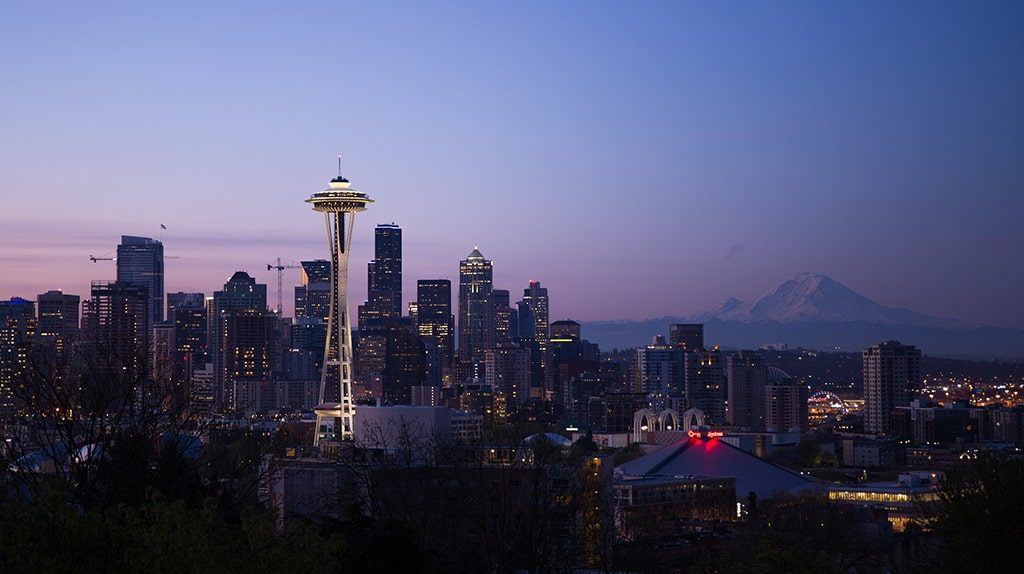Like so many of the best ideas, Serin D. Houston’s book Imagining Seattle began with a single very long walk. Houston recounts the walk in the book’s introduction:
By the end of that October day in 2005, the contours of this urban context infused my body. The wonderment in my eyes reflected the array of façades and landscapes I had encountered during this walk. The savory aromas I smelled spoke to the multiplicity of people and cuisines populating Seattle. The dirt clogging my pores revealed the grit and grime of this mass of living and nonliving beings. The sounds of the lapping waters of Lake Washington, Lake Union, and Puget Sound emphasized the fluvial activity sculpting the city. The quickening of my heart rate beat out the fear and dislocation that often accompany dark city streets. The wincing of my feet reminded me of the many paths and travels that have brought people to and from this place. I had lived in Seattle for over a year at that time, yet I was experiencing the city entirely anew.
Try to forgive Houston’s florid language here — it’s seriously the worst writing in the book — as a representation of her enthusiasm. Those of us who were not born and raised in Seattle can likely remember the first time we realized that our idea of the city was far too provincial. The fake boundaries we established in our mind were blown away, revealing a much larger, and more complex, city to reckon with.
Imagining Seattle is a book about the distance between the Seattle that we mythologize to ourselves and to others and the real Seattle that we actually live in every day. Houston correctly identifies Seattle as a kind of dream state, a story of boundless successes and enthusiastic inclusion that may or may not bear any similarities to the real Seattle’s history and government.
Through her ethnographic research, Houston asked Seattleites to explain the city to her. Many of them told stories like this:
“Seattle is a rich town. It’s got some of the largest corporations in the world here — some of the richest families in the world here. IT’s got a deep seaport out there that’s second to none. You know what I mean? It’s got a world-class airport. It’s got one of the biggest medical centers in the world — University of Washington…I mean, do you see any ghettoes here? Do you see any slums? I mean, you have got to run a long time around here to find any poor, P-O-O-R, neighborhoods. Seattle is a very wealthy town.”
And that’s definitely the story that Seattle most commonly exports these days: an American tale of bold entrepreneurship rewarded with incalculable wealth. But though that story has been told by Seattle endlessly over the last century, any longtime resident could easily identify the lies in it.

